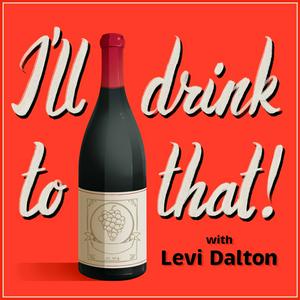499: David Rafanelli on Four Generations Making Wine in California
David Rafanelli and his family own the A. Rafanelli Winery in the Dry Creek Valley of Sonoma County, California.David relates the story of his Italian grandmother arriving in California in 1903, and beginning to make homemade wine in San Francisco. He explains how the family bought farm land in the Dry Creek Valley in the 1920s, thus beginning a 100 year stretch of working with vines within a 3 mile radius, something which continues today. The current winery housing A. Rafanelli was founded in 1973.David took agronomy and crop science courses in Oregon in the late 1960s, and also went to school for viticulture in California. He has throughout his career compared and combined the wisdom that was passed on to him by his family members with the teachings he learned in school. David went to work for the Lambert Bridge Winery in the 1970s, allowing him the opportunity to contrast the situation of another winery with that of his own family. David’s dad, who passed away in 1987, typically worked with Zinfandel and complementary grape varieties at the Rafanelli winery. David convinced him to also plant Cabernet Sauvignon. David discusses the introduction of heat treated vines in the 1970s, and the prevalence of leaf roll virus prior to their introduction. He speaks about the failure of the AxR1 rootstock in California, and how that shaped the replanting of vines later on in the state. David emphasizes working a piece of land and the importance of being familiar with it.The process of achieving an appellation for the Dry Creek Valley started in 1982, and David speaks about that, as well as the characteristics of the Dry Creek Valley in terms of climate, soils, and geography. He also talks about the challenges to Zinfandel presented by cooler and hotter years, and how he approaches blending from different sites within Dry Creek to achieve consistency. He further talks about the difference between making a wine just from Zinfandel versus blending other grape varieties into a wine that is mostly Zinfandel.The A. Rafanelli winery began using new French oak barrels for Zinfandel in the mid-1980s, and David talks about the significance of that, as well as what the unfined and unfiltered approach implies for his Zinfandel based wines. David sums up the challenges that were associated with marketing Zinfandel outside of California in the 1980s, and the stylistic divergence of different types of Zinfandel: light Zin, white Zin, table wine, and the late harvest style. He talks about being in on “the ground breaking of premium wines” in California and points to a “big change” between the 1960s and 1990s. He recalls how fruit crops were removed from California and replaced with vines, whereas previously there had been more demand for those fruit crops.David speaks at length about winery sales and production size, and points out that the job isn’t just making wine. It is also dealing with what nature gives, and then marketing bottles of wine. He explains why he focused on selling direct to consumers, instead of having someone else market and sell all the wine. He talks about patterning his marketing efforts on wineries like Stony Hill that sold direct through a mailing list. David suggests asking what the goal of a winery entering the wine business should be, and that the answer is “all on what you perceive as success.” He suggests avoiding a production size that ties a winery into permanent growth, and also having a plan for the wine that will be made before it is produced.David is frank about the pressures on wineries in California to sell the winery instead of retaining a family business for generations. “Everything is working against that family winery,” says David, and he specifically warns against the hazards of increasing bottle production. “What is the definition of success?" asks David. "Success is happiness, success is making what you need to make.” David speaks about the significant roles two of his daughters hold at the family winery today.David speaks about the Zinfandel grape and soil types: what Zinfandel prefers in terms of rocks versus clay. He also addresses the effect of soil type on Zinfandel ripening, as well as the thickness of the skins. Zinfandel is generally thin skinned, with tight clusters, and a ripeness that is not uniform, says David. He relates that the frustrations of growing Zinfandel are such that “if I was growing grapes, I probably wouldn’t grow Zinfandel to sell.” That being said, two thirds of the family winery production is Zinfandel. David suggests that Zinfandel is a grape that California largely has to itself, and that as such, he generally isn't competing with the rest of the world and other versions of that grape variety. He also summarizes the Dry Creek flavor profile for Zinfandel.When discussing his winemaking, David says he aims for a long ageing style of Zinfandel that is not overripe. He talks about Bordeaux winemaking technique being used with Zinfandel. He talks about ageing the wine in the winery for a bit of time before releasing it to the public. He emphasizes cleanliness in the winery. He differentiates between punch downs and pumpovers, and what they means for both the fermenting juice and the skins. He talks about how they approach malolactic conversion and the pressing of grapes at the winery today.David advises determining a wine style that you like and sticking to it, he relates the pleasures of working with hundred year old vines in Sonoma, and alludes to the "never ending process” of learning.See Privacy Policy at https://art19.com/privacy and California Privacy Notice at https://art19.com/privacy#do-not-sell-my-info.

